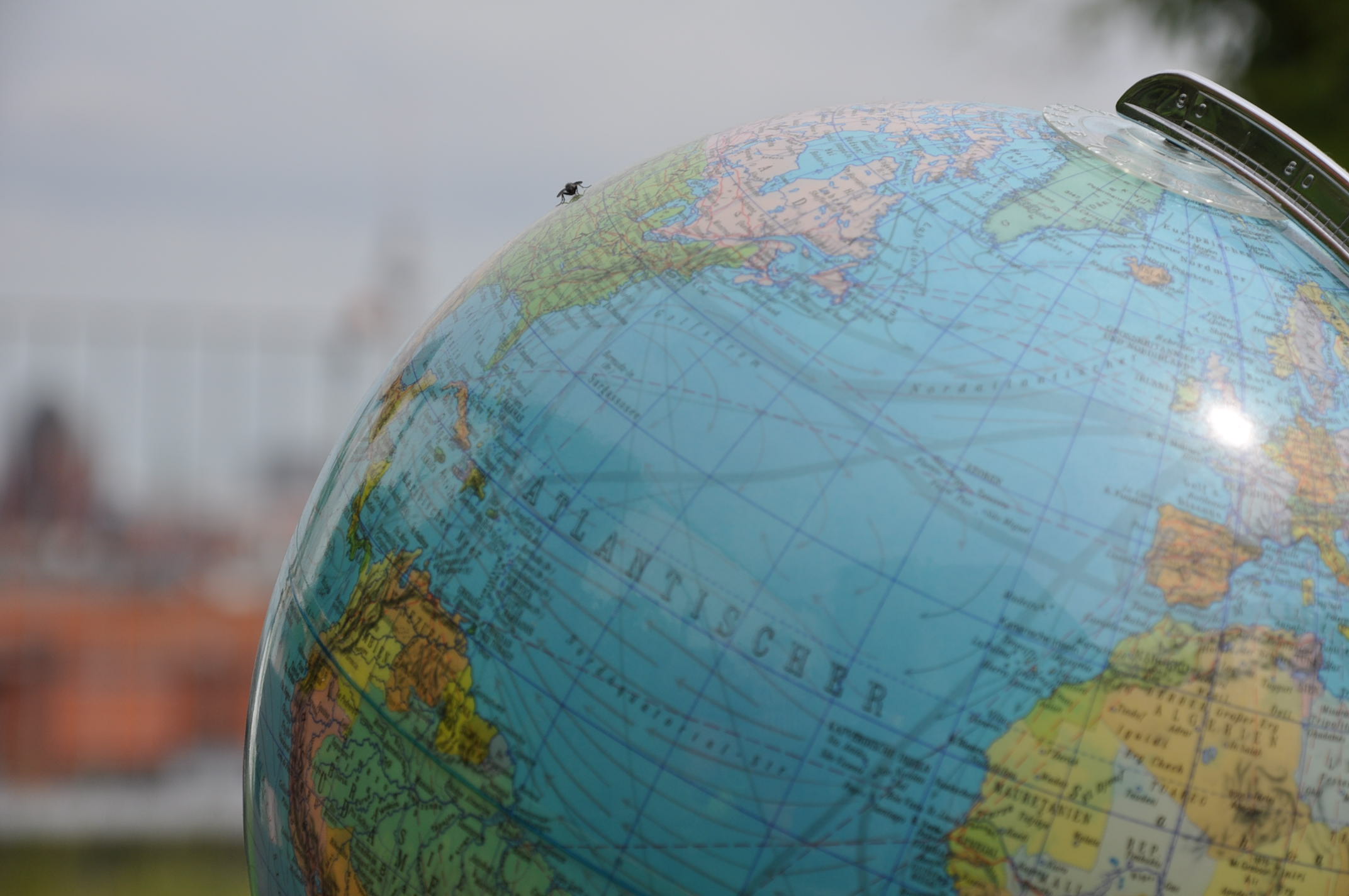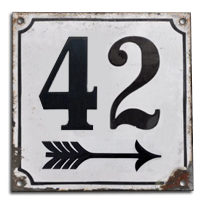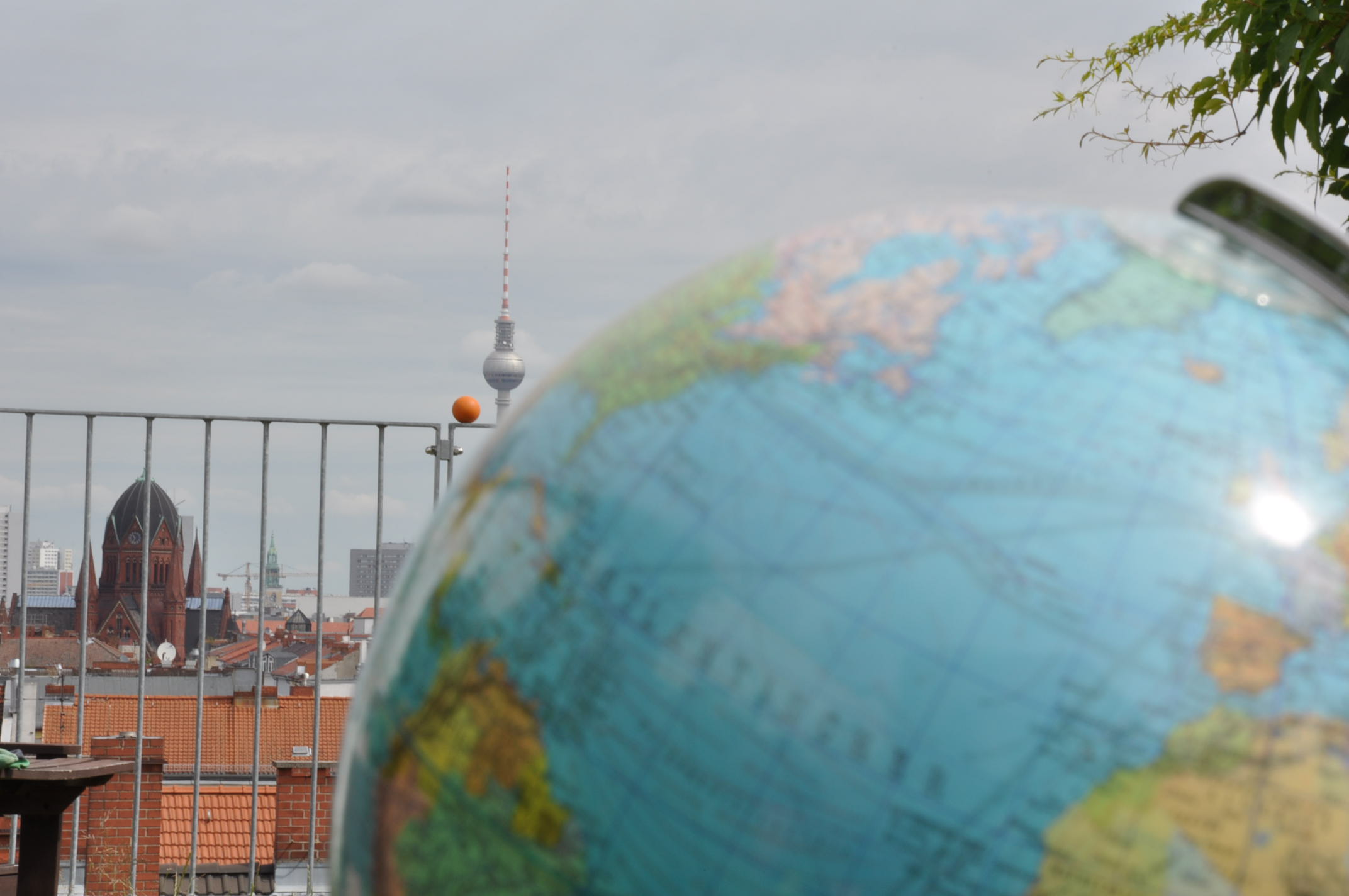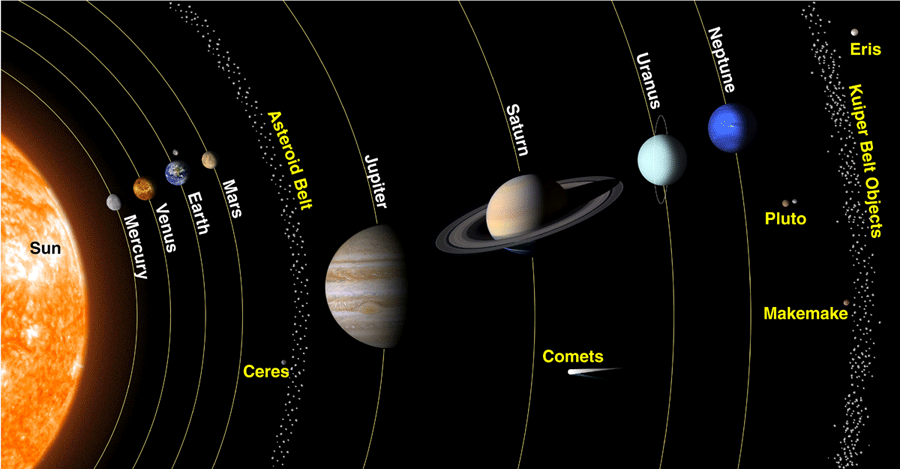For the first time ever, we can have a closer look at Pluto this week. After a journey of almost ten years, the spacecraft New Horizons will pass the mysterious dwarf planet, which is a mind-boggling five billion kilometres away. Is it possible to really grasp that sort of distance? I think it is – with the help of a kid’s model globe and the Berlin TV tower.
To start, let’s represent the earth with my son’s basketball-sized globe. Just like that, the distance from Berlin to New York has shrunk from 6,400 kilometres to 13 centimetres. The usual flight time between the two cities is about nine hours. Just imagine how microscopically small an aeroplane would be at this scale, and how slow its journey across the Atlantic Ocean.

Next stop: The moon, which is now the size of an orange. In many a school text book, the moon hangs directly next to the earth it orbits. But that is a white lie. In fact, the pages of a book are far too small to draw the proportions to scale. A whole eight meters separate our globe from the moon-orange. If our mini passenger plane could cruise to the moon at regular speed, it would take two and half weeks.
Sticking to this scale, the sun is a ball of fire with a diameter of about 30 metres – just like the spherical rotating restaurant in Berlin’s TV tower. It is about three kilometres away, just like in this photograph from our terrace:
At regular cruising speed, our mini-aeroplane would take about 20 years to reach the sun. The sun’s rays travel at the speed of light and take eight minutes to arrive here. To get from the sun (a.k.a. the TV tower) to our globe in eight minutes, we need to travel at about 20 kilometres per hour. (So if you want to fake a journey at light speed, just put your globe on the side of a road and cycle past at moderate speed. The lesson? Light travels very fast – but not unimaginably fast…)
Jupiter, the largest planet of the solar system, circles the sun at a leisurely speed some 15 kilometres away. It moves through the distant outskirts of Berlin, skirting Schönefeld Airport and Spandau. Jupiter takes almost twelve years to complete one circuit. With a diameter of three metres, Jupiter is a whopper, even at this scale. Saturn, with its beautiful rings, is about twice as far away; Uranus and Neptune much further still.
Now moving on to mysterious Pluto. At this scale, New Horizons’ target is the size of a table tennis ball and circles the sun more than 100 kilometres away. Pluto’s orbit around our miniature sun takes it on a sightseeing tour through Poland and the city of Magdeburg. Pluto is so utterly remote that the most flattering portraits available pre-New Horizons amount to no more than this:
What choice did I have but to chose another Pluto as title image? The name of Mickey Mouse’s dog is more than a silly coincidence: He was named after the recently discovered planet in 1931.
You need a serious telescope and a serious amount of good luck to spot a table tennis ball in Poland from Berlin. Size is not the only problem here, but also the dismal lighting conditions. The only “lamp” in our little planetary system is the sun in the TV tower, and not much of its light reaches a little table tennis ball in Poland. Given these conditions, it is not surprising that Pluto was only discovered in 1930. Because objects of a similar size were later found beyond it, Pluto lost its label “planet” and was demoted to “dwarf planet” in 2006 – a few months after New Horizons set off for its journey. It barely managed a third of its orbit with the medal “Planet” stuck to his chest.
If you wanted to display this picture with distances to scale, you’d need to get a screen at least one kilometre wide
So we’ve followed New-Horizons’ journey all the way to Pluto, until recently the outermost planet of the solar system. This begs the question: What is the next stop? Can New Horizons point its cameras to the nearest stars soon, for close-up portraits of those beacons of the night sky?
Sadly, that goal remains elusive in the extreme. Sticking to our orange/TV-tower/globe model, the distance to the nearest stars is still too large to grasp – so let’s shrink our solar system even further, until the sun is as small as a table tennis ball.
If the mighty sun was the size of a table tennis ball, the earth would circle it at a distance of around four metres. Our home planet would now be the size of a grain of sand. The moon, which is almost too small to see, circles it at a distance of one centimetre. Pluto is now still around 150 metres away from the sun.
But where are the other stars? If our sun was a table tennis ball in Berlin, the closest star, Proxima Centauri, would be smaller than a pea – in London.
Other neighbouring stars can be found in Rome and Moscow. You see, space is thinly populated. The stars are much easier to spot than Pluto, only because they shine so brightly – in the dark expanses of our miniature universe, they look like high-power lightbulbs.
Given these distances, it’s obvious that journeys to other stars will firmly remain in the realm of sci-fi for the foreseeable future. We would, after all, have to launch from our grain of sand in Berlin and make it all the way to London. New Horizons travels at the record speed of more than 50,000 kilometres per hour. Still, even at that impressive velocity, it will take tens of thousands of years before it gets anywhere near other stars.
Some other space probes have already ventured out into the vastness of space beyond the planets. None has got any further than Voyager, launched in 1977. In 1990, Voyager was as far away from the earth as New Horizons is today. At the suggestion of astronomer Carl Sagan, Voyager turned its camera backwards, to take one last look at our home planet before the spacecraft sailed off into the nothingness.
Seen from that distance, the earth is barely visible – it’s the tiny pale blue dot in the middle of the top sunbeam (the sunbeam is just a reflection inside the camera). This image, perhaps like no other, shows that travelling so far away also illuminates our understanding of what is nearest to us. It gives context to our humble little globe. Do yourself a favour and listen to Sagan’s musings on this photo – and again…and again…
“From this distant vantage point, the Earth might not seem of any particular interest. But for us, it’s different. Consider again that dot. That’s here. That’s home. That’s us. On it everyone you love, everyone you know, everyone you ever heard of, every human being who ever was, lived out their lives.
The aggregate of our joy and suffering, thousands of confident religions, ideologies, and economic doctrines, every hunter and forager, every hero and coward, every creator and destroyer of civilization, every king and peasant, every young couple in love, every mother and father, hopeful child, inventor and explorer, every teacher of morals, every corrupt politician, every ‘superstar,’ every ‘supreme leader,’ every saint and sinner in the history of our species lived there — on a mote of dust suspended in a sunbeam… It has been said that astronomy is a humbling and character-building experience. There is perhaps no better demonstration of the folly of human conceits than this distant image of our tiny world. To me, it underscores our responsibility to deal more kindly with one another and to preserve and cherish the pale blue dot, the only home we’ve ever known.”






Comments are closed, but trackbacks and pingbacks are open.